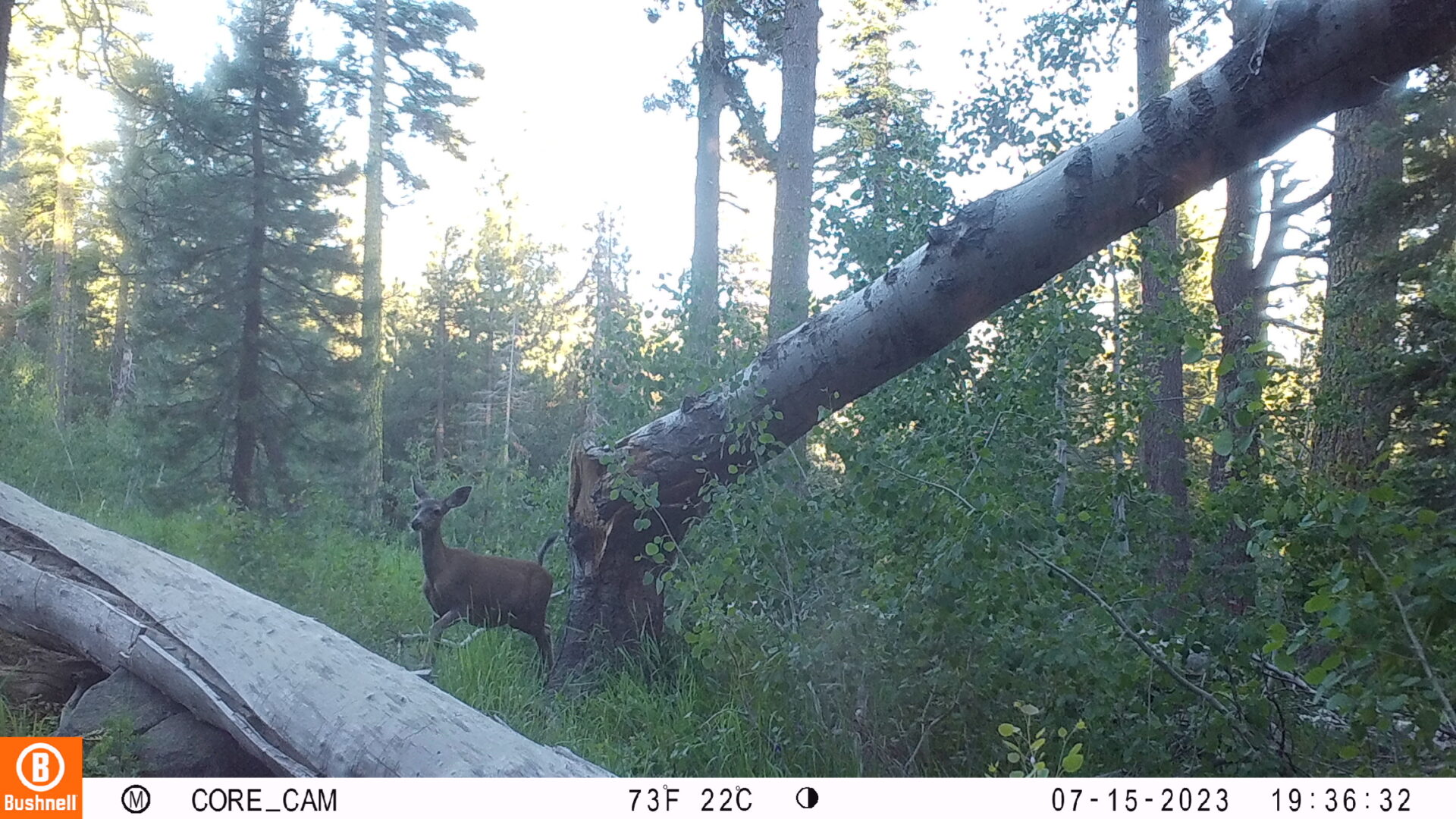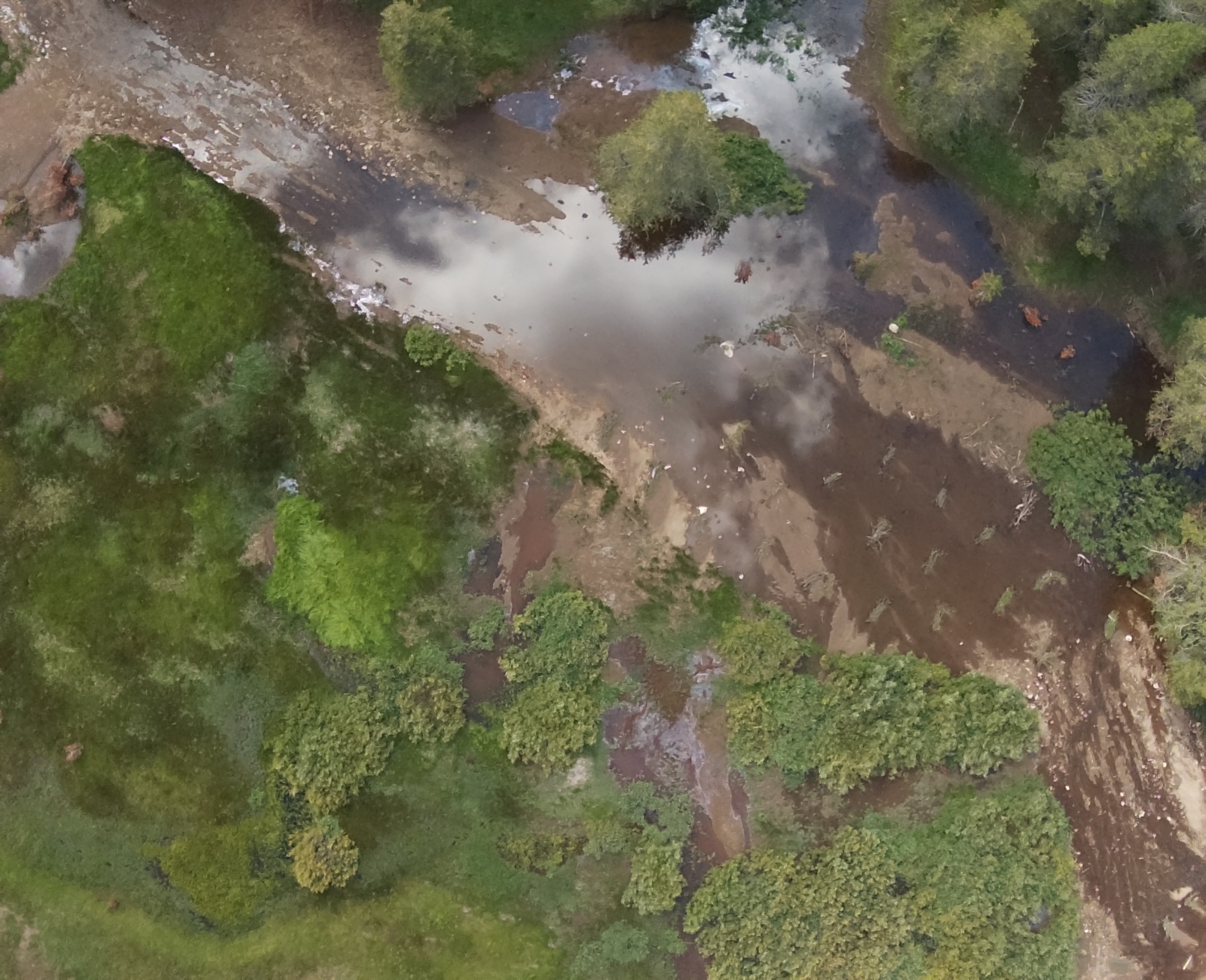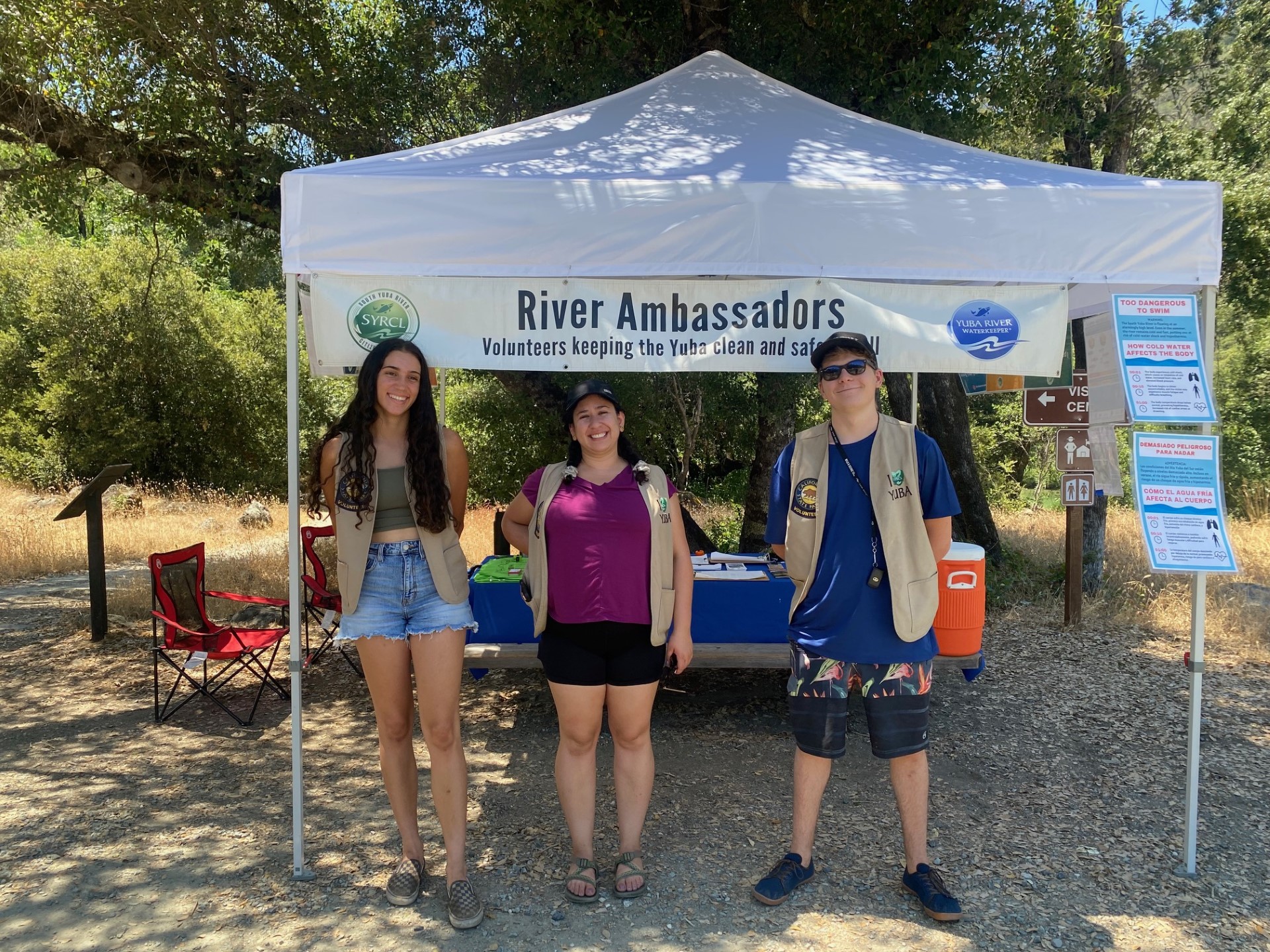Caught on Camera! Aspen Wildlife Game Cameras in Action
For the last three years, SYRCL has placed game cameras within aspen stands in the upper Yuba watershed. We have cameras throughout the headwaters of the North, Middle, and South Yuba capturing animals utilizing the aspen.
These animals use the aspen for foraging or hunting grounds, bedding for young, or even as back scratching posts. In our placement of game cameras, we want to gauge the diversity of animals that utilize these aspen stands, as well as the frequency.
Aspen, with their leaves quaking in the wind and stark white bark, are instantly recognizable. The yellow leaves mark the stands within a sea of evergreen each fall. Rarely found in contiguous stands, aspen appear at meadow fringes, along streams, or where snow may persist on the western slope of the Sierra Nevada. Different than the aspen on the eastern slope or even within the Lake Tahoe Basin, western slope aspen are seral1. These seral stands need periodic disturbance to trigger aspen regeneration. This can be as small as a tree falling leaving an opening in the canopy, to a wildfire covering the landscape. These disturbance events are important to promote the growth of young aspen suckers and to remove competition, primarily from conifers, within the aspen stand. Without such events, conifers continue to overtop the aspen until none remain. Western slope aspen may be sparse but are important habitat for flora and fauna; even surpassing the biodiversity of adjacent meadows.
Through funding from the Wildlife Conservation Board SYRCL has mapped and assessed over 600 acres of aspen habitat in the Yuba River Watershed, and is now planning restoration of the most critically threatened stands. The wildlife camera monitoring will inform the type of restoration treatments prescribed, and gives us a pre-implementation dataset to compare post-treatment. Restoring aspen will have countless benefits to wildlife, water quality, groundwater retention, landscape fire resilience, biodiversity conservation, recreation, and more.
If you want to help with our aspen project we will have aspen volunteer days! Follow SYRCL’s eNews to learn more closer to summer.
- A seral stage is a specific vegetation community occurring on a site at some point in time. When the trees in a forest are cleared during a disturbance (e.g., logging or wildfire), the land does not return to its former forested state in a single step. Rather, one vegetation community is gradually replaced by another. Early seral is the first stage in forest development following any disturbance. An early seral, or early successional community is made up of the first colonizers of a forest opening, or by species that survive the disturbance. The mid-seral stage follows the early seral stage, and is the stage when forests naturally thin. — Seral – Old Growth Forest Ecology ↩︎
Did you enjoy this post?
Get new SYRCL articles delivered to your inbox by subscribing to our ENews.















I didn’t see too many aspens among all the pines in your photos..